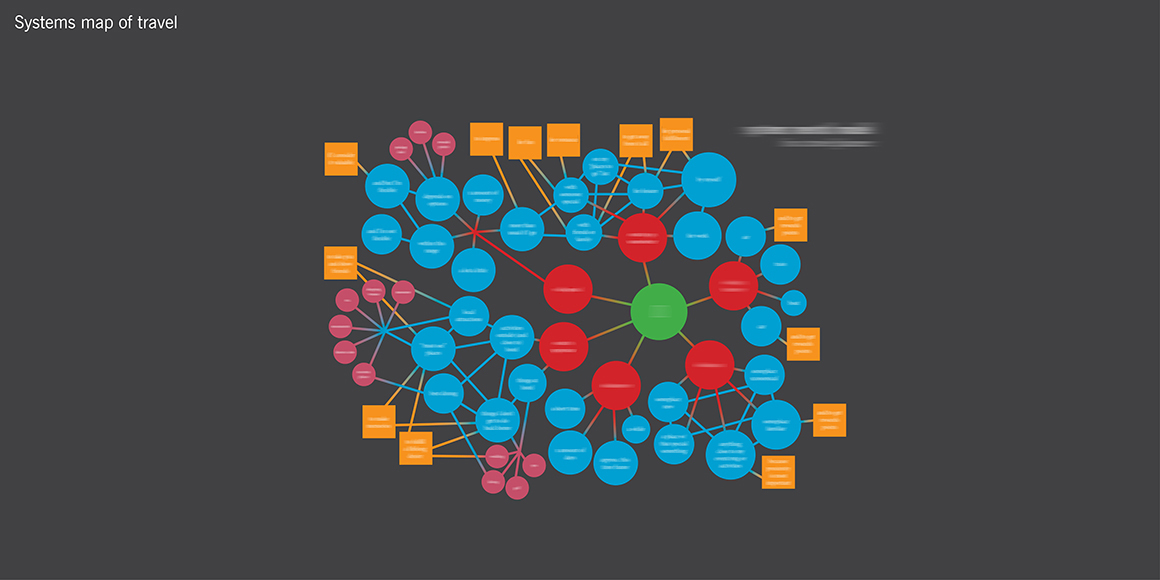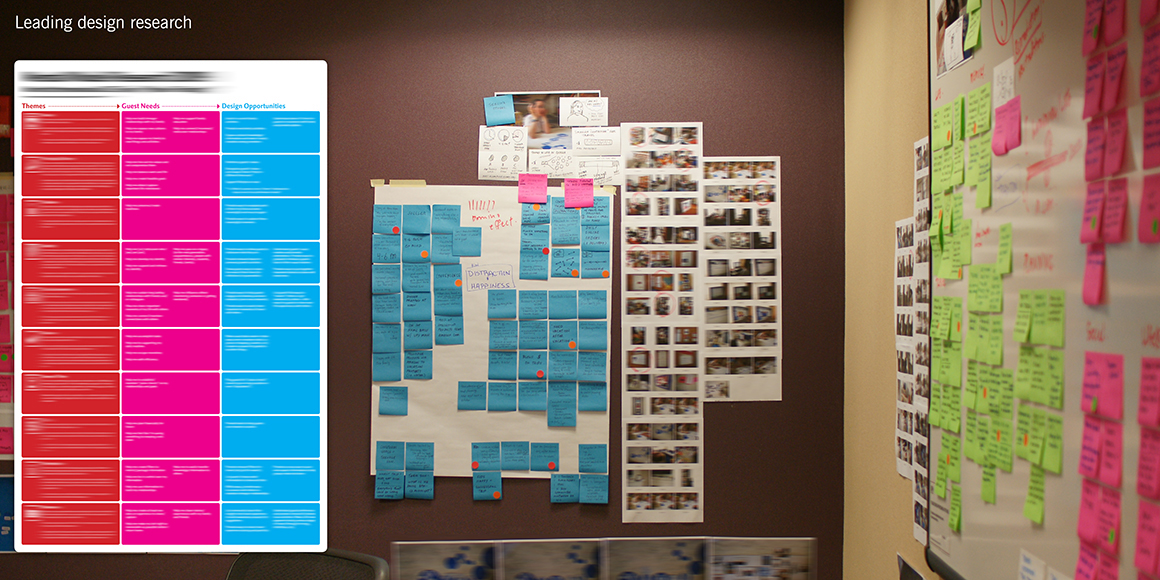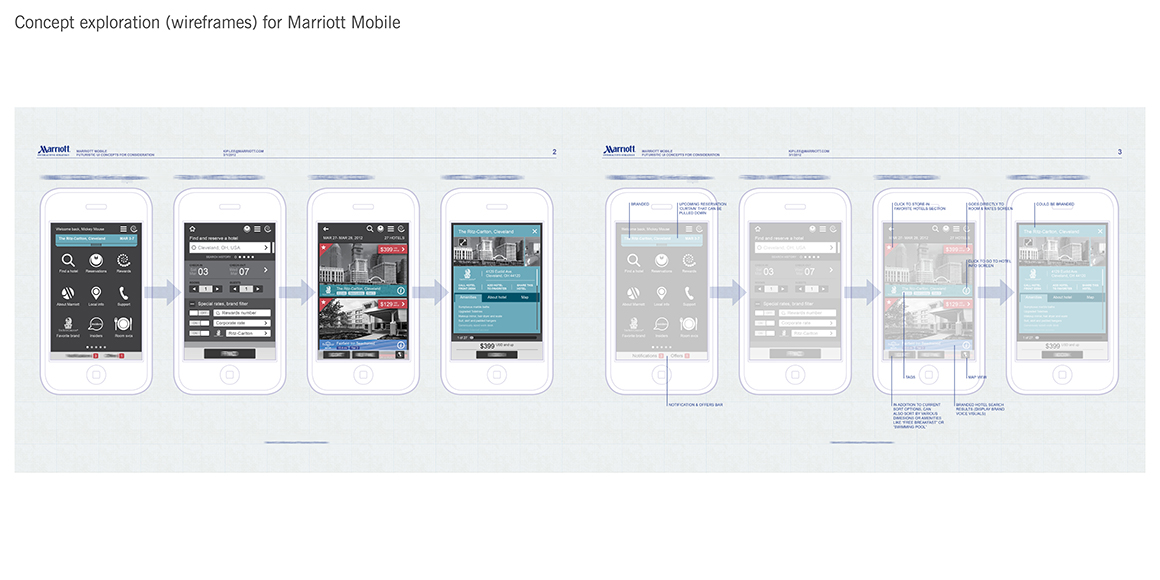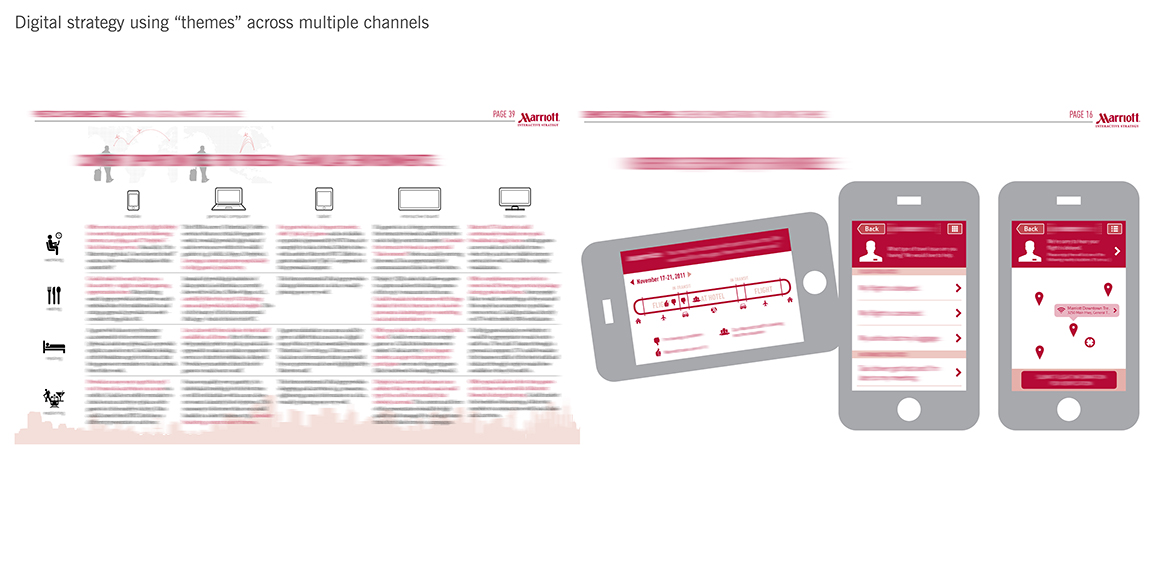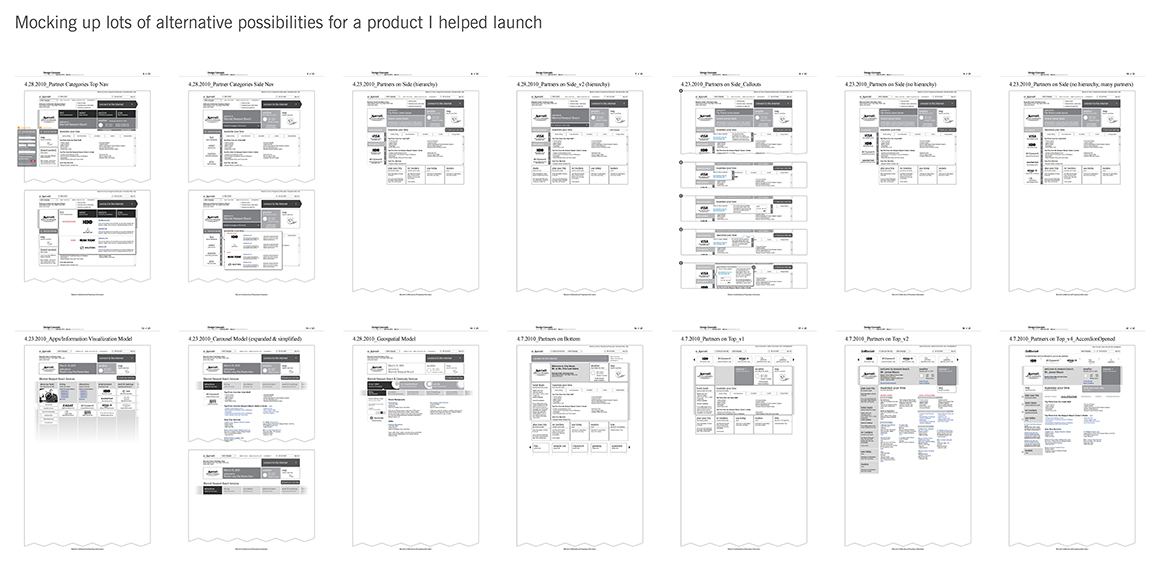Marriott: Strategy Work
Various examples of strategic work done while at Marriott are presented here. Sensitive and confidential content has been blurred.
Aside from the great product development experience at Marriott, I had an even greater opportunity to shape the emerging digital strategy for the organization by working closely with the chief strategist of the eCommerce division, the group responsible for over 40% of Marriott’s gross revenue at the time. This work helped executives reimagine the future of travel. This was visualized through “a story of a traveler doing bizarre things like using a smartphone app to check into his hotel and order room service, video-calling his family, watching his own movies on the hotel TV, and ordering a taxi from an app.”
Here is what the Senior VP of Digital had to say about my specific contribution back in 2010:
Over the last several months, Kip has worked directly with me to help craft the future online vision for the company, where we have been exploring and visually articulating how the convergence of “3 screen technologies” (PC, TV, mobile) will transform the travel business – and Marriott’s customer service model. This work has now been shared with Marriott’s President & Chief Operating Officer and its CIO; it is soon to be shared with Mr. Marriott himself and his other top executives.
This is far from mere “conceptual visioning” work. Kip is in fact at the forefront of the practical application of innovative design to tackle and deliver on Marriott’s substantial business objectives. Kip has been the lead designer and human-factors expert on the first phase of Marriott’s “Guest eInterface Strategy,” an effort I am leading to radically transform the guest experience at all on-property electronic touchpoint (PCs, TVs, etc.) by leveraging technology to deliver “information-as-service” to over 26 million customers this year. In 2008-2009, this effort went from concept to successfully launch in over 60% of Marriott’s 3,300 hotels worldwide, and it has quickly burgeoned into a substantial new revenue source for the company. Moreover, Kip is also a lead on Marriott’s mobile interface initiative, another new channel which already drives more revenue in a single month than Marriott.com did in its entire first year of operation. Mobile is rapidly becoming the single most powerful emerging guest service channel for Marriott, and Kip is making a very material contribution to this crucial part of the guest experience and the company’s mobile future.
Some of these documents have been cultural artifacts to help make arguments about the future of the organization during a time when the organization had yet to embrace digital as a comprehensive strategy. Design thinking was not yet a widely used term, nor evident in the structure of the group. Arguably, some of the culture-shaping work I did during this time helped establish design and design thinking as a foundation for digital transformation.
See this article from CIO.com:
How design thinking drives Marriott’s digital strategy
TIMEFRAME OF PROJECTS
Fall 2008 – Summer 2012
